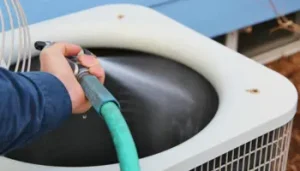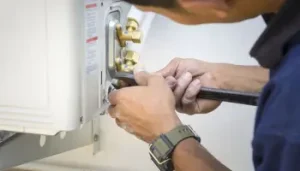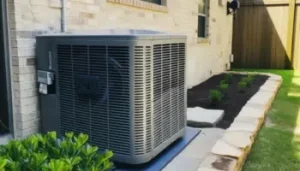The HVAC (Heating, Ventilation, and Air Conditioning) industry is evolving, and maintenance practices are undergoing a significant transformation. Gone are the days of waiting for equipment to break down before addressing issues. Today, smart technology is shifting HVAC maintenance from a reactive approach to a more proactive predictive and preventive model. This change is enabling businesses and homeowners to keep their HVAC systems running efficiently for longer periods, saving both time and money.
In this comprehensive guide, we’ll explore how predictive and preventive maintenance is shaping the future of HVAC, what challenges and opportunities lie ahead, and the long-term benefits of this shift.
Traditional HVAC Maintenance: Reactive and Preventive Models
For years, the HVAC industry relied on two primary maintenance strategies: reactive and preventive.
Reactive Maintenance: The Old Way
Reactive maintenance is exactly what it sounds like—waiting for something to break before fixing it. This approach results in unexpected downtime, costly repairs, and, in severe cases, the complete failure of HVAC systems. Since no maintenance is performed until an issue occurs, this strategy often leads to sudden system breakdowns, which are inconvenient and costly.
Preventive Maintenance: A Step Up
Preventive maintenance takes a more structured approach by scheduling regular inspections and routine tasks like cleaning, lubricating, and inspecting system components. The idea is to prevent equipment failures before they happen. While preventive maintenance is more effective than reactive maintenance, it still relies on fixed schedules rather than the actual condition of the HVAC system. This can result in either performing unnecessary maintenance or failing to detect potential system failures early on.
The Game Changer: Predictive Maintenance for HVAC Systems
Predictive maintenance is revolutionizing HVAC by utilizing real-time data from smart sensors, advanced algorithms, and machine learning to monitor HVAC systems continuously. This allows for the detection of potential problems before they escalate into costly breakdowns, giving technicians the opportunity to address issues before they disrupt system operation.
How Predictive Maintenance Works
At the heart of predictive maintenance are IoT (Internet of Things) devices and smart sensors integrated directly into the HVAC system. These sensors collect a constant stream of data related to system performance, including parameters like temperature, humidity, motor vibration, airflow, and pressure. Here’s how the process works:
- Data Collection: Smart sensors embedded within the HVAC system capture real-time data on various components, monitoring key metrics such as temperature fluctuations, pressure levels, motor vibration, and humidity. The data is then transmitted to a central system for analysis.
- Data Analysis: Machine learning algorithms analyze this data, searching for trends, patterns, and anomalies. For example, a gradual increase in motor vibration could signal a developing issue with the motor bearings. By catching such subtle changes early, predictive maintenance prevents small problems from snowballing into major failures.
- Predictive Insights: Based on the analysis, the system generates actionable insights and alerts for technicians. For instance, if a component shows signs of wear and is likely to fail in the next few weeks, technicians can schedule proactive maintenance to address the issue before it leads to system downtime.
- Proactive Maintenance: With predictive insights in hand, maintenance can be performed precisely when needed—no more guessing or sticking to a rigid schedule. This targeted approach ensures the HVAC system runs at optimal efficiency and significantly reduces the risk of unexpected failures.
The Benefits of Predictive Maintenance for HVAC Longevity
Adopting predictive maintenance offers a range of benefits that extend the life of HVAC systems and improve overall performance:
1. Reduced Downtime
By identifying and addressing potential issues before they result in complete system failure, predictive maintenance minimizes unexpected downtime. This is especially critical in commercial settings, where HVAC failures can disrupt business operations and lead to expensive delays.
2. Extended Equipment Lifespan
Predictive maintenance ensures that HVAC systems receive the care they need at the right time, preventing unnecessary wear and tear. Regular, timely maintenance keeps equipment running smoothly, extending the system’s operational life and delaying the need for costly replacements.
3. Lower Maintenance Costs
While predictive maintenance requires an upfront investment in smart sensors and analytics tools, the long-term savings are significant. By preventing major breakdowns and avoiding unnecessary service calls, predictive maintenance reduces overall maintenance costs.
4. Improved Energy Efficiency
A well-maintained HVAC system runs more efficiently, consuming less energy to achieve the desired indoor climate. Predictive maintenance ensures that all system components are operating optimally, reducing energy consumption and lowering both utility bills and carbon footprints.
5. Better Indoor Comfort and Air Quality
With predictive maintenance, HVAC systems maintain consistent performance, delivering reliable heating, cooling, and ventilation. This results in better air quality and a more comfortable indoor environment, whether it’s a home, office, or industrial facility.
The Role of Preventive Maintenance in Modern HVAC Systems
While predictive maintenance focuses on using real-time data to prevent failures, preventive maintenance still plays a crucial role. Preventive tasks like cleaning filters, lubricating moving parts, and checking refrigerant levels are essential to keep HVAC systems running efficiently. The difference now is that smart HVAC systems can automate these tasks based on usage patterns and environmental conditions, ensuring maintenance happens exactly when it’s needed—not too early or too late.
By combining both predictive and preventive strategies, HVAC systems can run more efficiently and enjoy a longer operational lifespan.
Challenges and Opportunities in HVAC Maintenance
The integration of smart technology and energy-efficient systems presents challenges, but it also opens new avenues for growth and innovation in the HVAC industry.
Challenges
- High Initial Investment: Transitioning to predictive maintenance involves significant upfront costs for installing smart sensors, analytics software, and IoT devices.
- Training and Skill Development: HVAC technicians must receive specialized training to work with advanced systems, sensors, and machine learning platforms, requiring time and resources.
- Regulatory and Standardization Issues: As smart technology advances, new standards and regulations will need to be developed to ensure compatibility, safety, and performance across systems.
Opportunities
- Market Growth: As demand for energy-efficient HVAC systems increases, businesses that offer smart, sustainable solutions will have a competitive edge in the market.
- Differentiation for HVAC Providers: Service providers who offer predictive maintenance can position themselves as forward-thinking and customer-centric, providing value-added services that set them apart from the competition.
- Environmental Impact: By reducing energy consumption and preventing major equipment failures, predictive maintenance supports sustainability efforts, making it an appealing choice for eco-conscious consumers and businesses.
Real-World Applications of Predictive Maintenance
Predictive maintenance is already being adopted in various industries, including HVAC. In large commercial and industrial buildings, this approach has reduced equipment downtime and extended the life of critical HVAC infrastructure.
In residential settings, smart thermostats and HVAC systems with predictive maintenance features are becoming more common. Homeowners can receive alerts about potential issues—such as a clogged filter or malfunctioning component—allowing them to schedule maintenance before the problem worsens.
For HVAC service providers, predictive maintenance offers an opportunity to enhance customer satisfaction. By offering real-time monitoring and predictive insights, these providers can offer a proactive approach that keeps systems running efficiently while reducing operational costs.
The Future of HVAC Maintenance: Intelligence and Automation
Looking ahead, predictive maintenance will continue to play a central role in HVAC. With advancements in AI and machine learning, predictions will become even more accurate, and IoT devices will make it easier to collect and analyze data. In the future, HVAC systems may even be capable of self-diagnosing and self-correcting minor issues, requiring minimal human intervention.
As HVAC systems become more intelligent and autonomous, predictive maintenance will not only extend equipment life but also improve energy efficiency, reduce environmental impact, and ensure occupant comfort.
Predictive Maintenance—The Key to a Longer HVAC Life
Predictive maintenance is ushering in a new era for the HVAC industry, where real-time data and advanced analytics enable a proactive, efficient approach to system upkeep. By identifying potential problems early and optimizing maintenance schedules, predictive maintenance extends the life of HVAC systems, lowers maintenance costs, and boosts energy efficiency.
As smart technology continues to evolve, predictive maintenance will become the standard in HVAC maintenance—paving the way for more reliable, energy-efficient, and environmentally friendly systems in both residential and commercial spaces. Knowing an expert HVAC contractor is a goo point to get timely inspections.
For homeowners, businesses, and HVAC professionals alike, predictive maintenance is not just a smart choice—it’s essential for a sustainable future.



